Luleå (Luleju in Northern Sami, Julevu in Lule Sami, Luulaja in Finnish) is a coastal city and capital of Swedish Lapland in the northern province of Norrbotten. It is the largest city in Swedish Lapland as well as a modern city focused on the digital economy. Indeed, it is a digital hub for Europe. The data centers of Facebook and Google are discreetly located here, where the machines are cooled simply by the polar wind… After a fire in 1885, the city of Luleå was rebuilt in a checkerboard pattern. The town has little interest, except perhaps for its « Oscar Fredrik Church », but the city enjoys a beautiful location at the heart of the Luleå archipelagoa, a group of 1,312 islands in the Gulf of Bothnia in the northern part of the Baltic Sea and one of the secrets of Sweden. Only 6 miles from Luleå, another town is much more interesting: the church-town of Gammelstad, listed as a UNESCO World Heritage Site.
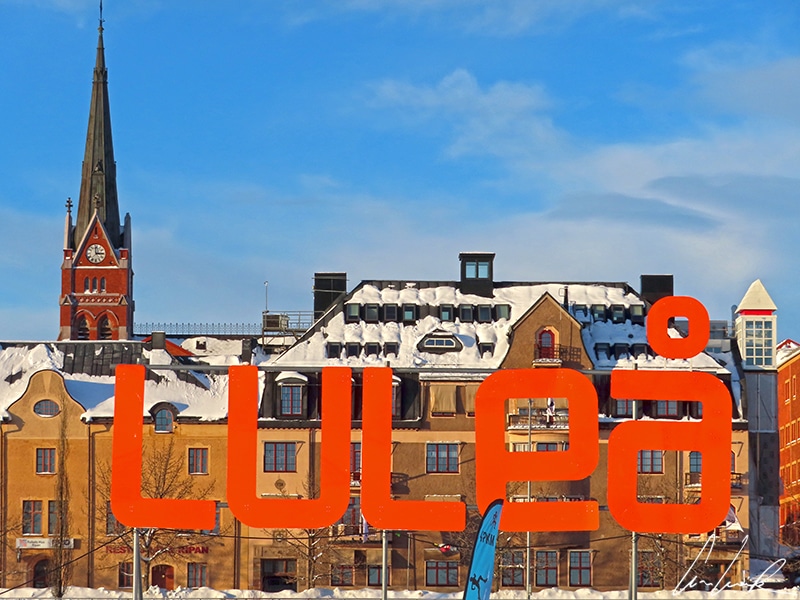
The letters of the city of Luleå are displayed in large orange letters
Luleå: Enjoy a gateway to the frozen sea !
In winter, the sea freezes over, completely transforming the landscape around Luleå. Some ice roads and bridges extend across the sea. Every winter, around 20 miles of ice roads are opened to traffic around Luleå’s islands, making it possible to travel by car or truck (without cargo). They are signs advising you to remove your seatbelt for a faster exit if your vehicle encounters thin ice… Driving a car on an ice road and passing a navigation buoy frozen into the ice is a pretty surprising experience! Another unique winter treat, as temperatures drop below freezing, winter enthusiasts are eager to get out and ice-skate on the natural ice. But where can you go ice skating in Luleå ?
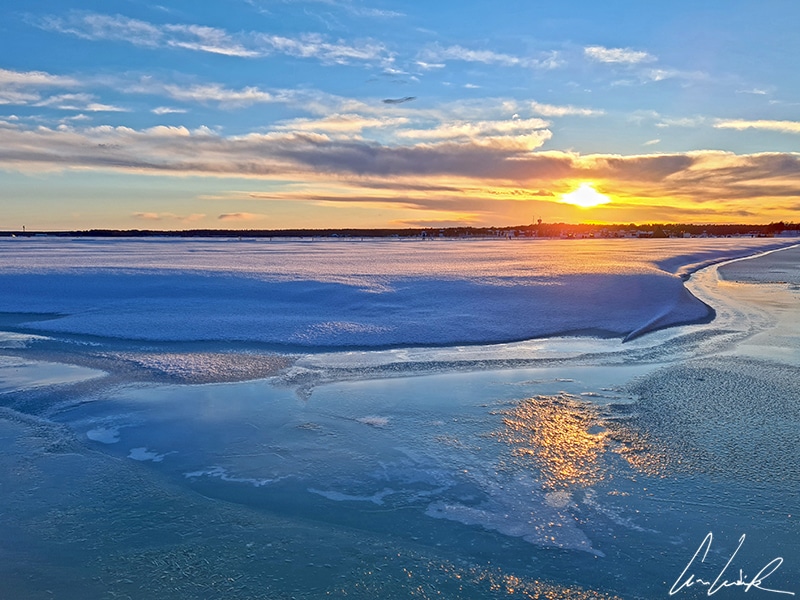
Luleå isbana (6-mile-long ice trail)
Luleå’s ice trail: the isbana
What makes Luleå so unique every winter is its 6-mile-long ice trail (isbana). The trail runs from Norra Hamn around Gültzauudden to Södra Hamn and continues to the island of Gråsjälören. Freshwater (from the Luleälven River) reaches the Luleå archipelago, where it is diluted, lowering the salt level and helping it freeze. From December to March and April, locals enjoy snow hiking, fat biking, ice skating, snow scootering (« sparkstötting »), and snowkiting on Luleå Bay. And what about you ? What do you fancy for your winter walk on the isbana ? Get on your ice skates (rented on-site), borrow a scooter free of charge, or take a stroll in spiked shoes – whatever you choose to make the most of your outing on the isbana. Don’t forget to take a waterproof backpack with dry clothes and a fika break.
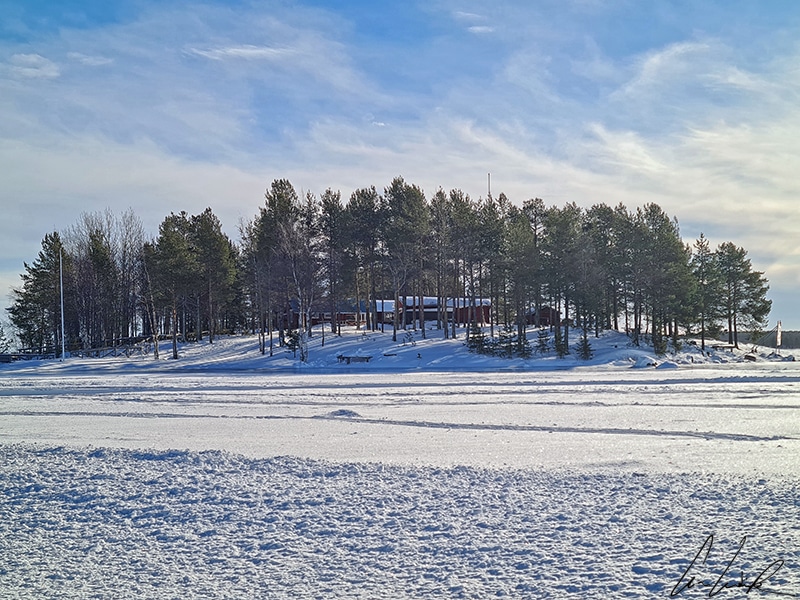
The island of Gråsjälören
Le sparkstötting: a traditional Swedish sled
We opted for a « spark » ride on the icy Bothnian Sea. When the footstep wobbles and the wheel skids on the slippery white mantle, the « spark » is the ideal way to get around. Consisting of a small wooden chair, a free space to stand at the back, and two long, flexible metal runners, the « spark » allows you to glide smoothly over snow and even ice. All you have to do is push off with your foot and slide along on this exciting half sled, half scooter. The first person sits comfortably on the seat. Two handles are attached to the backrest to act as handlebars, allowing the second person to stand and push the sled.

Spark or snow scootering
Now it’s time for the pleasures of skating. You feel the ice beneath your feet. Squealing slightly, the skates obey gently but firmly every time you apply pressure. You glide and glide and glide on the pearlescent ice while the wind whistles in your ears… Sensations guaranteed ! Did you know that in 1926, sparkstötting became a discipline of the Nordic Games, held seven times between 1901 and 1926? The first « sparkstötting club » was founded in 1888, and the first competition took place in 1889.

A skater on the isbana of Luleå
The art of Nordic or cross-country skating
Of course, we don’t glide as fast on our « spark » as the skaters who overtake us on this natural mirror! Nordic skating is sometimes called touring skating because the distances are generally long. It is practiced with long-bladed skates: in Swedish, « långfärdsskridskor » or long-distance skates. « Långfärdsskridskoåkning » (no, that’s not my cat chewing on the keyboard) is the unpronounceable word for Nordic skating. Depending on experience and stamina, some ice-skating tours take skaters from 15 to 125 miles a day. In other words, you must be physically healthy to enjoy cross-country skating in the heart of Swedish nature. Skating on natural ice is a must, but safety is vital. A few tricks can improve your chances of survival if the ice breaks up, such as an ice pick, a skating stick to test the thickness of the ice, and rescue rope and extra dry clothes in a waterproof bag. Lycka till ! (Good luck).
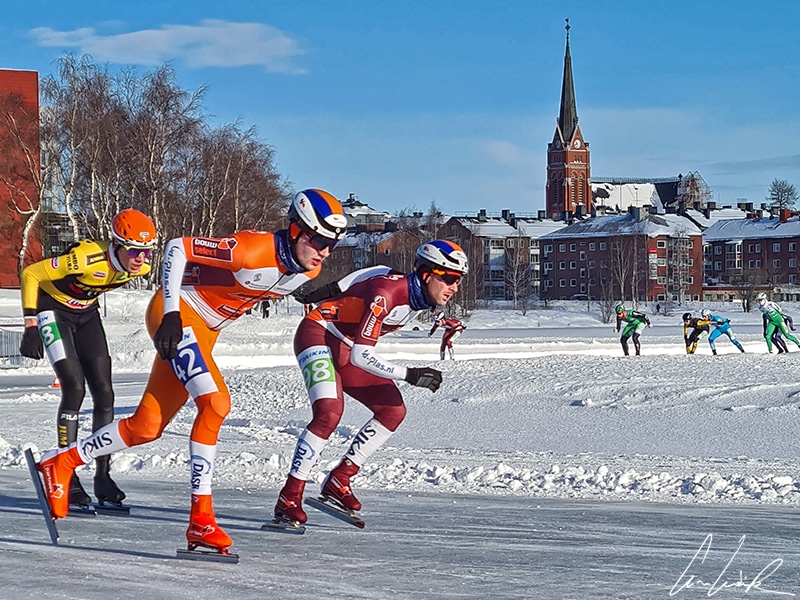
Sea-Ice marathon skaters in Luleå
If skating isn’t your cup of tea, you can enjoy the spectacle of the Sea-Ice marathon on the isbana… It is a challenge for marathoners to skate over a course ranging from 3 to 26 miles…
« It never goes out of my memory
On one leg until evening
He slid there on his mirror
He skated
IHe skated
On one leg he skated »
(The skater by Julien Clerc, French singer)
Snow sculptures in Luleå: playing in the snow is serious business !
On your way back from a skating session on the isbana, admire the snow sculptures lining the quays. It’s said that the traditional art of snow sculpture comes from Canada (The Quebec Carnival takes place every year in February.) The snow sculpture is one of the ephemeral arts, and playing in the snow is serious business in Sweden! Each creation is more breathtaking than the last. Are you ready to give free rein to your inspiration ? If so, we’ll show you how to become a seasoned snow sculptor…
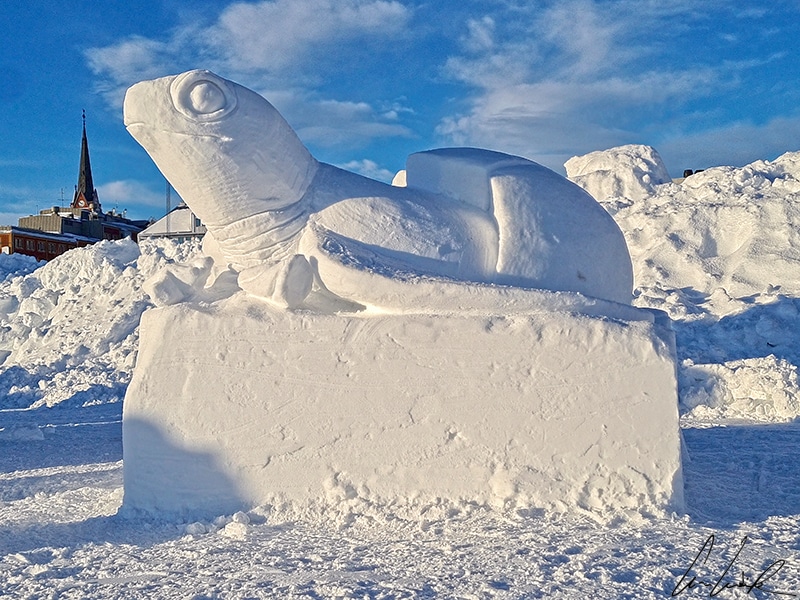
A snow sculpture in Luleå: turtle
The very first step is to examine the texture of the snow. Yes, it’s essential to check the quality of your raw material! As a snowball expert, I can tell you: snow quality varies according to temperature. You need to adapt to the unique combination of density and humidity that the snow offers you that day. Today it’s cold, so we will add a little water to get a nice sticky snow and build a big block of snow using a form.
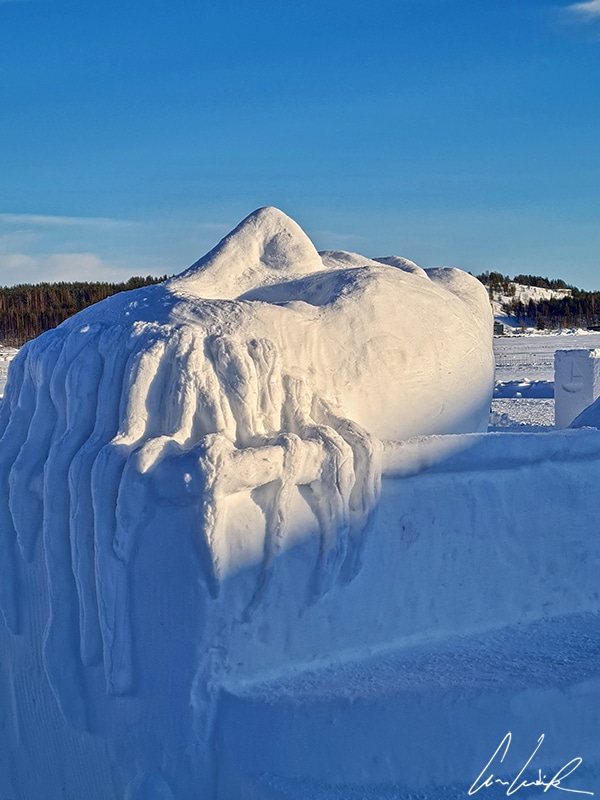
A snow sculpture in Luleå: face
The second step is to test different tools: shovels, spatulas, a saw, a grinder, a rake, a broom, and so on. Even an unusual tool can bring new experiments. Your sculpture is beginning to take shape, isn’t it? Finally, the third step is to perfect and fine-tune your sculpture by adding shadows, moldings, etc., with small tools. And that’s all there is to it…
When a Fika break is called for !
After all these outdoor activities, a Swedish coffee break, or fika, is a must. It’s a real institution in Sweden! So let’s enjoy this short moment of the day with a hot drink, perhaps accompanied by a sweet treat like a « kanelbulle » (cinnamon roll).
What is fika ?
After « hygge », the Danish art of living, you may be seduced by « fika » to describe the extended Swedish art of the coffee break. Fika is used as both a noun and a verb in Sweden. The origin of the name is unclear; it is believed to derive from the word « kaffe » (coffee), the syllables of which are said to have been inverted to give « feka » and then « fika ». Sweden is the world’s third-largest coffee consumer, with a per capita consumption of 18 lbs in 2022. By comparison, France is only in 15th place, with a per capita consumption of 6 lbs…
Fika in Sweden: so much more than a coffee break
The tradition of the « fika » is believed to have first appeared shortly after the Second World War, in the 1950s, when the country was experiencing an economic boom. Swedes have become accustomed to getting together two or three times a day to break the rhythm of the day and spend some quality time with colleagues, friends, family, or simply someone you’d like to get to know better. There are even « fikarum » in the office, areas dedicated to « fika » where you can find hot coffee, little cakes, and colleagues, incidentally, to chat with! As you can see, the « fika » is a ritual that shapes and organizes the Swedish day. I propose exporting breaks and promoting slow coffee in French offices ! While we’re waiting for the concept to be exported, if you’d like to experience a real break… there’s only one way: go to Sweden for your next vacation ! If you’re not convinced, take a look at Go Royal’s hilarious clip Swedish Fika, which gives you a real buzz while extolling the virtues of Swedish fika. To be enjoyed without moderation !
Swedish sweets for a gourmet « fika » ?
Over time, the well-known sweet treat accompanying coffee breaks, « ‘fikabröd », has also become very popular. The « kanelbulle », a snail-shaped cinnamon bun, occupies a central place in the « fika » pantheon. Close your eyes and inhale the delicious smell of cinnamon, imagine the crispness of the dough and the little pearls of sugar, and indulge yourself by eating en kanelbulle, två kanelbullar (one cinnamon roll, two cinnamon rolls). Did you know that there’s even been a day dedicated to this traditional pastry since 1999 ? Every year on October 4 the « kanelbulle » fiesta takes place !
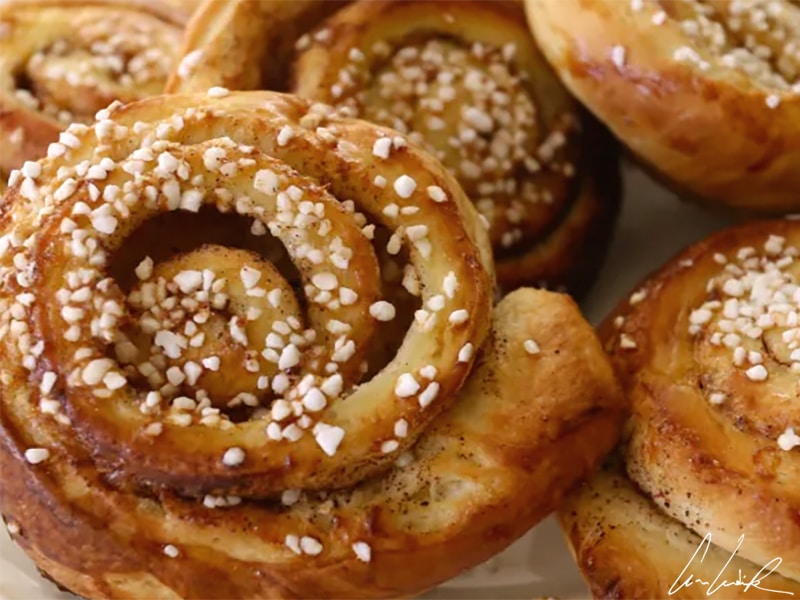
The famous “kanelbulle” or snail-shaped cinnamon bun
Enjoy without moderation! Not quite so sure ? In 2013, the European Union came close to banning this traditional cinnamon bun… because there’s too much cinnamon in the recipe. The target of EFSA (the European Food Safety Authority) was coumarin, a substance naturally present in Chinese cinnamon, a variety of cinnamon commonly used in baking. In July 2008, the European Union set a maximum daily intake of 0.1 mg coumarin/kg body weight. Excessive consumption of coumarin can be potentially toxic to the liver, and the substance is also suspected of being carcinogenic. A study found that more than half of the local pastries exceeded the limit of 15 mg per kilo! Should Sweden give up its emblematic brioche? Fortunately, or unfortunately for those with a sweet tooth, Sweden has bypassed European regulations by classifying its « kanelbulle » as a traditional and seasonal dish, which allows them to contain three times the level of cinnamon set by Brussels. The alternative would have been to replace Chinese cinnamon with Sri Lankan cinnamon, which contains much less coumarin than its Chinese counterpart and is more aromatic but more pricey.
« Of all the passions, the only truly respectable one seems to me to be gluttony. »
(Lovers and Scoops, Guy de Maupassant – 1850-1893)
If you’ve finally given up on cinnamon rolls, here’s the crème de la crème of other Swedish sweets to accompany your coffee at the « fika »:
- The Swedish princess cake « prinsesstårta » is a classic Scandinavian torte with layers of sponge cake covered with vanilla custard and a spoonful of whipped cream. It is traditionally dome-shaped and covered with a layer of marzipan tinted green.
- The Swedish sticky chocolate cake « kladdkaka » for chocolate addicts is a kind of gooey, fudgy brownie that is delicious when served with whipped cream.
- The Swedish version of strawberry shortcake is « jordgubbstårta », which means « cream and strawberry cake ». It is a light and fruity dessert perfect for summer, consisting of sponge cake covered with vanilla cream and strawberry jam (or fresh strawberries crushed with a pinch of sugar). The cake is covered with whipped cream and topped with a generous helping of freshly picked strawberries.
Smaklig måltid (good appetite)
The church-village of Gammelstad: a UNESCO World Heritage Site
Only a few miles from the city of Luleå lies the church village of Gammelstad, listed as a UNESCO World Heritage Site since 1996. Gammelstad is the best-preserved example of a “church village,” a unique kind of traditional village found throughout northern Scandinavia, almost unchanged for four hundred years.
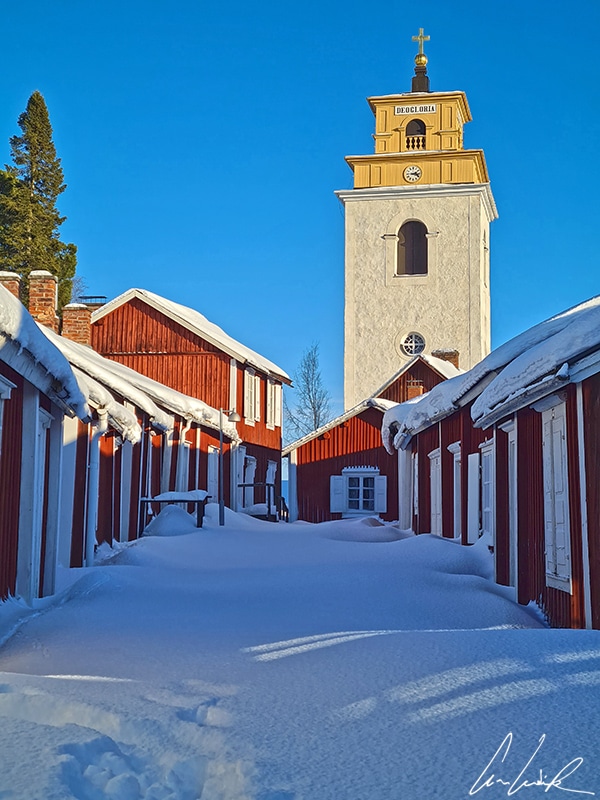
The church town of Gammelstad
What is a church village ?
The 424 houses surrounding the 15th century stone church of Nederluleå were used only by the worshippers from the surrounding area to sleep before Sunday mass. The concept of church villages or towns, typical of northern Scandinavia, was developed to enable parishioners to attend church despite difficult geographical and harsh climatic conditions. The ingenious solution was to build a village around the church, where people could spend the night, attend weekly services and meet other parishioners. Of Sweden’s 71 known church towns, only 17 remain today, many of them sadly only ruins.
The church town of Gammelstad
The 405 red cottages with white windows and sills are huddled around the stone church. The town also features six stables and a washroom. Since they were only used on days of worship and religious festivals by worshippers from the surrounding area, the houses were tiny. These houses only sometimes have running water, and toilets are shared. All cottages are numbered. In the rare case of two-story houses, the upper part has its own number.
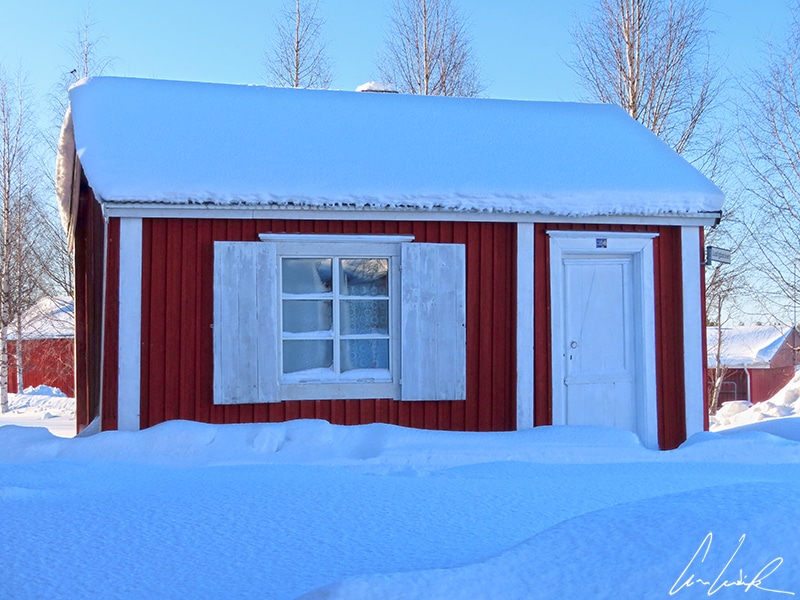
Red cottage in Gammelstad
The irregular layout of the houses suggests that they were built as needs arose over several centuries. While the first houses were built along the paths leading to the church, later houses were built on the surrounding land, creating narrow lanes and even narrow passages between houses. Gammelstad’s wooden houses are painted Falun red and have pitched roofs today, mostly covered with sheet metal. Most houses have shutters, which are closed when the owner is away. In Gammelstad, the custom of the village church survives. Three or four times a year, parishioners are invited to a religious festival such as Glad påsk (Happy Easter) and Glad midsommar (St. John’s Day) !
Nederluleå church
Luleå was founded in 1621 on the site of the medieval church of Gammelstad but then moved 6 miles further away in 1649 due to lower sea levels. Nederluleå church (Swedish: Nederluleå kyrka) was built in the second half of the 15th century. It was consecrated in 1492. Nederluleå church is the largest medieval church in Norrland. It forms a part of the UNESCO World Heritage Site Gammelstad Church-town. A sacristy was added to the northern façade and a church porch to the southern. The church is built of about 40 types of rock, with details made of brick. The shingled roof was rebuilt in 1558 after a fire destroyed the roof. The white-rendered bell tower, erected in 1851, is separate from the church and stands at the front of the west façade. It replaces the original wooden campanile.

Gammelstad, l’église de Nederluleå
The interior of the church (vaults and choir walls) is decorated with magnificent frescoes from the late Middle Ages, by artists from the school of Albertus Pictor. Albertus Pictor, also known as Albert Målare and Albrekt Pärlstickare (the pearl embroiderer), worked in numerous churches in Southern and Central Sweden, using lime. A technique unheard of at the time in these latitudes. One of his best-known works is in the church of Täby in a suburb of Stockholm, depicting a man playing chess with Death, a motif that inspired Ingmar Bergman in a famous scene from the 1957 movie « The Seventh Seal ».
« The priest: Is that why you are playing chess with Death ?
The knight: He is a clever opponent, but up to now, I haven’t lost a single man
The priest: How will you outwit Death in your game ?
The knight: I use a combination of the bishop and the knight, which he hasn’t yet discovered. In the next move, I’ll shatter one of his flanks.
The priest (Death) shows his face at the grill of the confession booth for a moment but disappears instantly.
Death: I’ll remember that. »
(Dialogue from Ingmar Bergman’s 1957 film « The Seventh Seal »)
The Nederluleå church tabernacle (not to be confused with the Quebec « tabarnak ») has finely carved figures depicting the Passion of Christ. The altarpiece is one of the finest and most noteworthy of its kind in Sweden ! Designed in Antwerp by a Flemish master in the 1520s, it cost 900 silver marks paid in cash, a colossal sum for a primarily peasant congregation… Tabernacle! (Quebec version this time). The magnificent organ in the gallery at the back of the nave should not be overlooked. This organ by Manufacture Grönlund dates from 1971 and has 55 stops on four 54-note manuals and a 30-note pedalboard—one of the most imposing instruments in this region of Sweden. Renowned organists, including Hans Fagius and Kari Engesnes. Herregud! (Oh my God !)
Tack så mycket! (thank you very much) et god fortsättning (good luck)
Discover my others articles about Lapland
- Lapland, a Winter Paradise
- Lapland, cradle of Sámi Culture
- Lapland: Northern lights like you’ve never seen them before!
- Tromsø, hunting the northern lights between fjords and mountains in Norwegian Lapland
- Frosty Fun in Luleå, Swedish Lapland

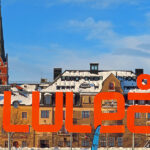

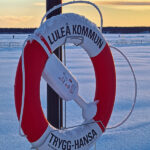
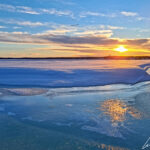
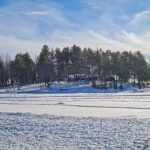
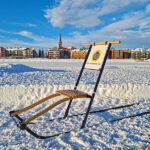
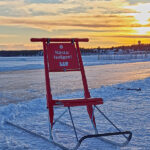

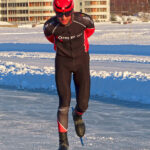
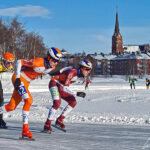
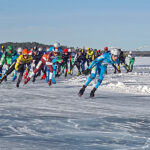
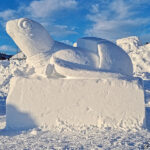


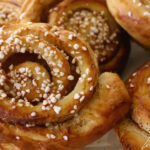

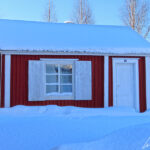
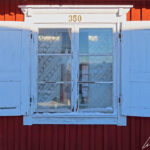
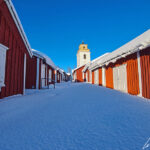
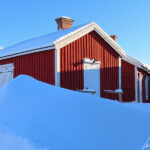
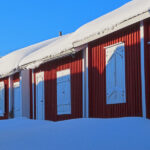
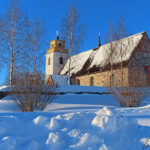
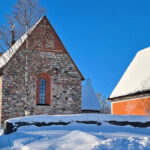




I can’t help but feel excited reading about your experience on the giant surface of ice near Lulea’s city. It sounds like you had an unforgettable time. After reading your posts, I’m definitively adding the icebreaker cruise to my bucket list for my future Lapland trip. And as daunting as it may seem, the idea of swimming in the dark icy water in a flotation survival suit is simply thrilling! Thanks for sharing you adventure with us.
Walking the Luleå 6-mile-long ice trail (isbana) is unique. It was a very special feeling because I know that in other seasons, this place is the sea! And I strongly recommend to jump on an icebreaker cruise and discover the frozen water of Bothnia Sea. The icebreaker makes a pool free of ice and every visitor can take a swim in the icy water. This is an amazing experience! Walking on the frozen sea and swimming in the icy water are on my Top-rated things to do in Lapland.